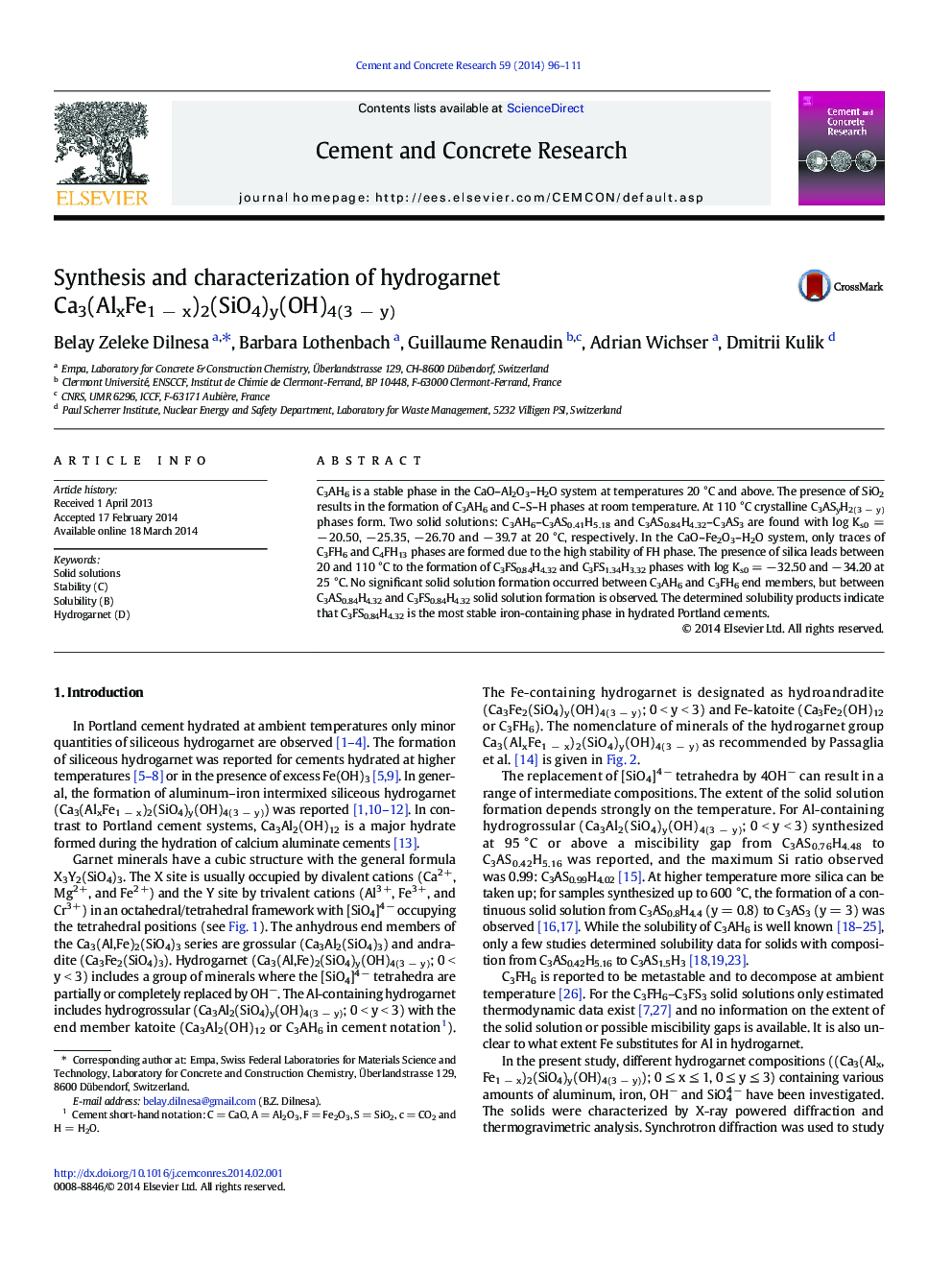| Article ID | Journal | Published Year | Pages | File Type |
|---|---|---|---|---|
| 1456327 | Cement and Concrete Research | 2014 | 16 Pages |
•C3AH6 is the stable phase and C3FH6 is unstable.•C3FS0.84H4.32 is the most stable iron phase in hydrated cements.•No solid solution formation between C3AH6 and C3FH6•Fe stabilizes the hydrogrossular and solid solution formation with Al-end members.
C3AH6 is a stable phase in the CaO–Al2O3–H2O system at temperatures 20 °C and above. The presence of SiO2 results in the formation of C3AH6 and C–S–H phases at room temperature. At 110 °C crystalline C3ASyH2(3 − y) phases form. Two solid solutions: C3AH6–C3AS0.41H5.18 and C3AS0.84H4.32–C3AS3 are found with log Ks0 = − 20.50, − 25.35, − 26.70 and − 39.7 at 20 °C, respectively. In the CaO–Fe2O3–H2O system, only traces of C3FH6 and C4FH13 phases are formed due to the high stability of FH phase. The presence of silica leads between 20 and 110 °C to the formation of C3FS0.84H4.32 and C3FS1.34H3.32 phases with log Ks0 = − 32.50 and − 34.20 at 25 °C. No significant solid solution formation occurred between C3AH6 and C3FH6 end members, but between C3AS0.84H4.32 and C3FS0.84H4.32 solid solution formation is observed. The determined solubility products indicate that C3FS0.84H4.32 is the most stable iron-containing phase in hydrated Portland cements.
